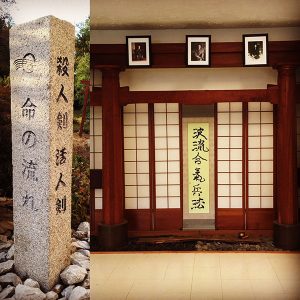Humility
April 23, 2018Veracity
May 7, 2018Courtesy

Courtesy in the code of bushido begins and ends every session in Martial Arts. The classes begin and end with a “rie” to the kami za and between the students and the teacher. Many define “rei” as a bow, however; it actually means respect. The students are not bowing to show the teacher as more important, nor the teacher to the students. Both are showing respect to one another.
This Courtesy goes much further. In class one must be courteous to their work-out partners or people could get hurt. That courtesy means being cognizant of the others abilities and limits. To be too aggressive in performing the part of the attacker could lead to injury. To not be aggressive enough could stagnate the learning. At the end of class many schools have the students bow to their partners to acknowledge this.
Outside of class the acts of courtesy become even more important. In samurai society, the samurai were all armed. This helped foster the necessity for manners. Still, if one is only concerned with showing courtesy to avoid harm, that person is shallow indeed. Many of the martial arts families have found that one of the most prized aspects of their children’s learning is how polite they become. This is one of the things they prize far beyond their child’s ability to fight. This is, also, something that sticks with the child long after complex katas are forgotten.
To hold a door for the next person is a simple courtesy one can practice every day. To give a smile and acknowledge other people can, often, make another’s day. Simple acts of courtesy are contagious, as well. By being courteous to others you find that most others are more courteous to you. For those who are not, well; they are just slow learners. Keep it up and they’ll catch on!
